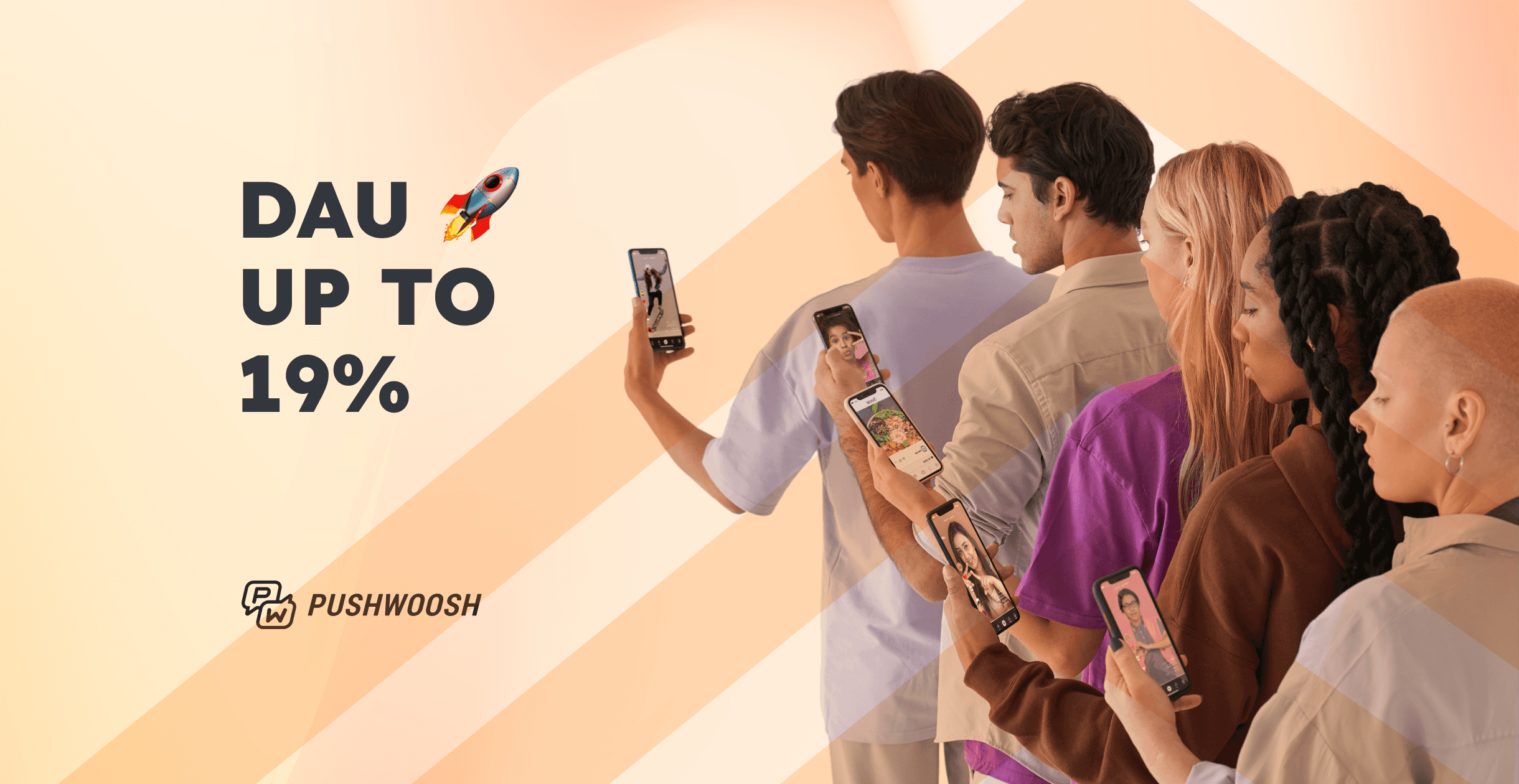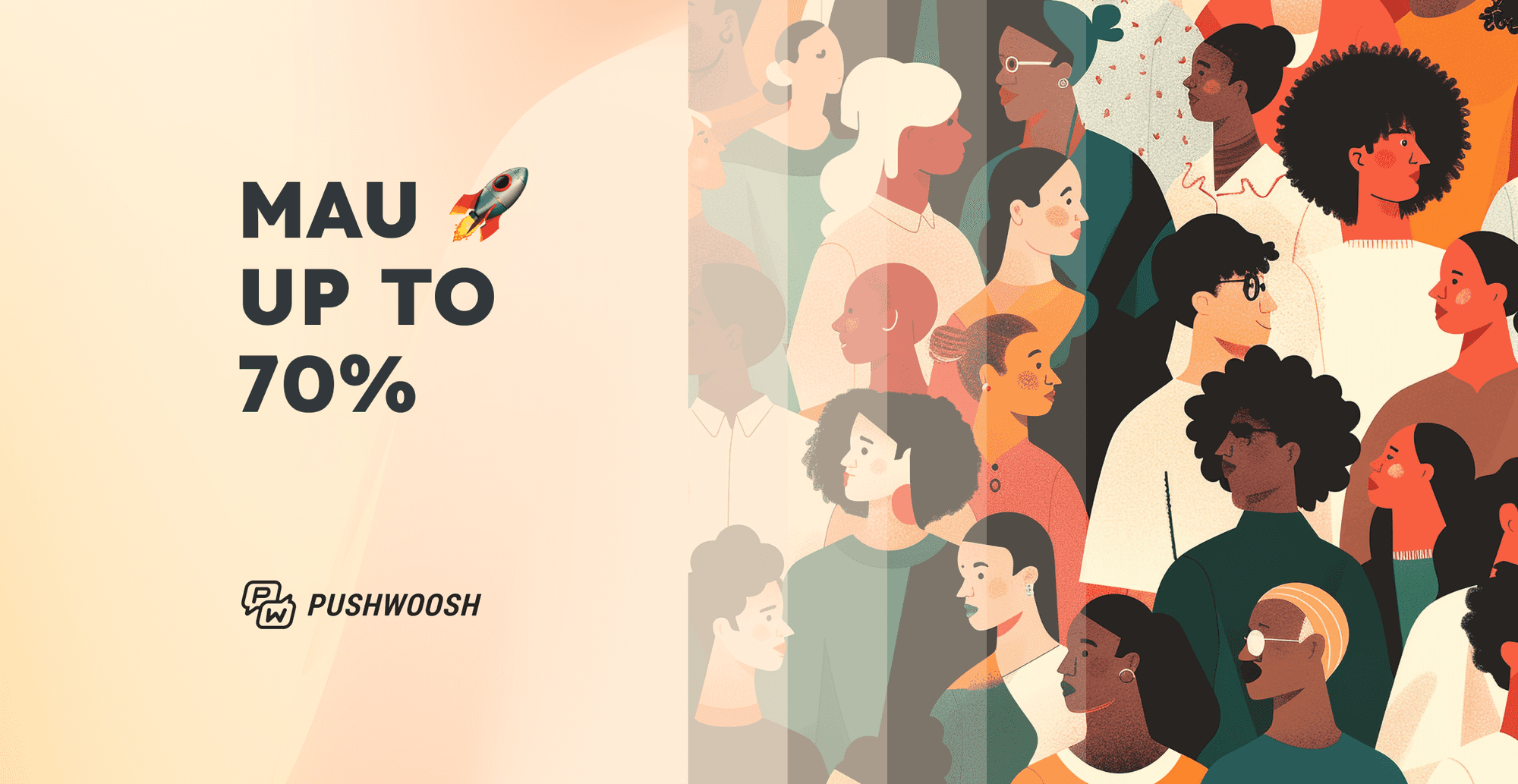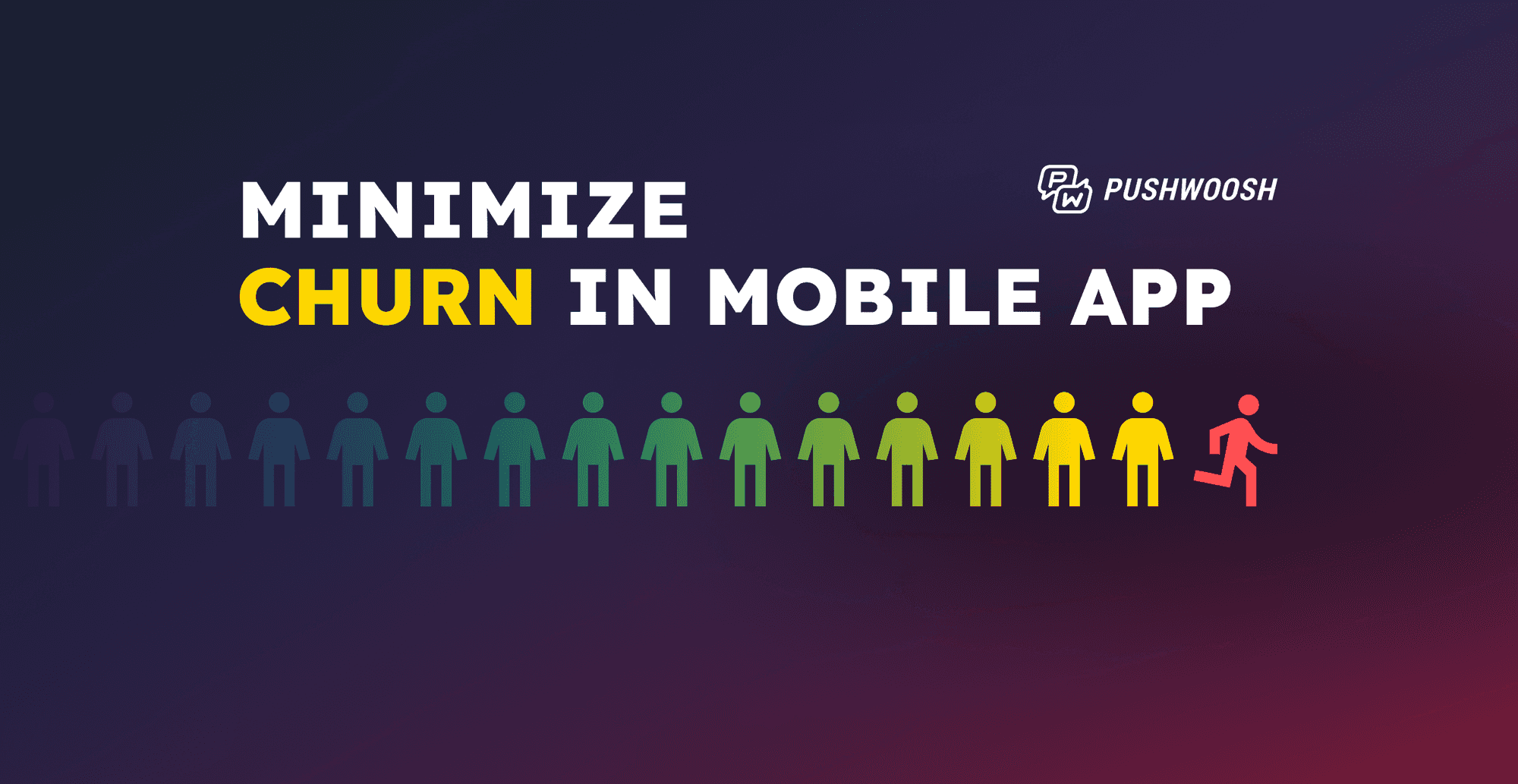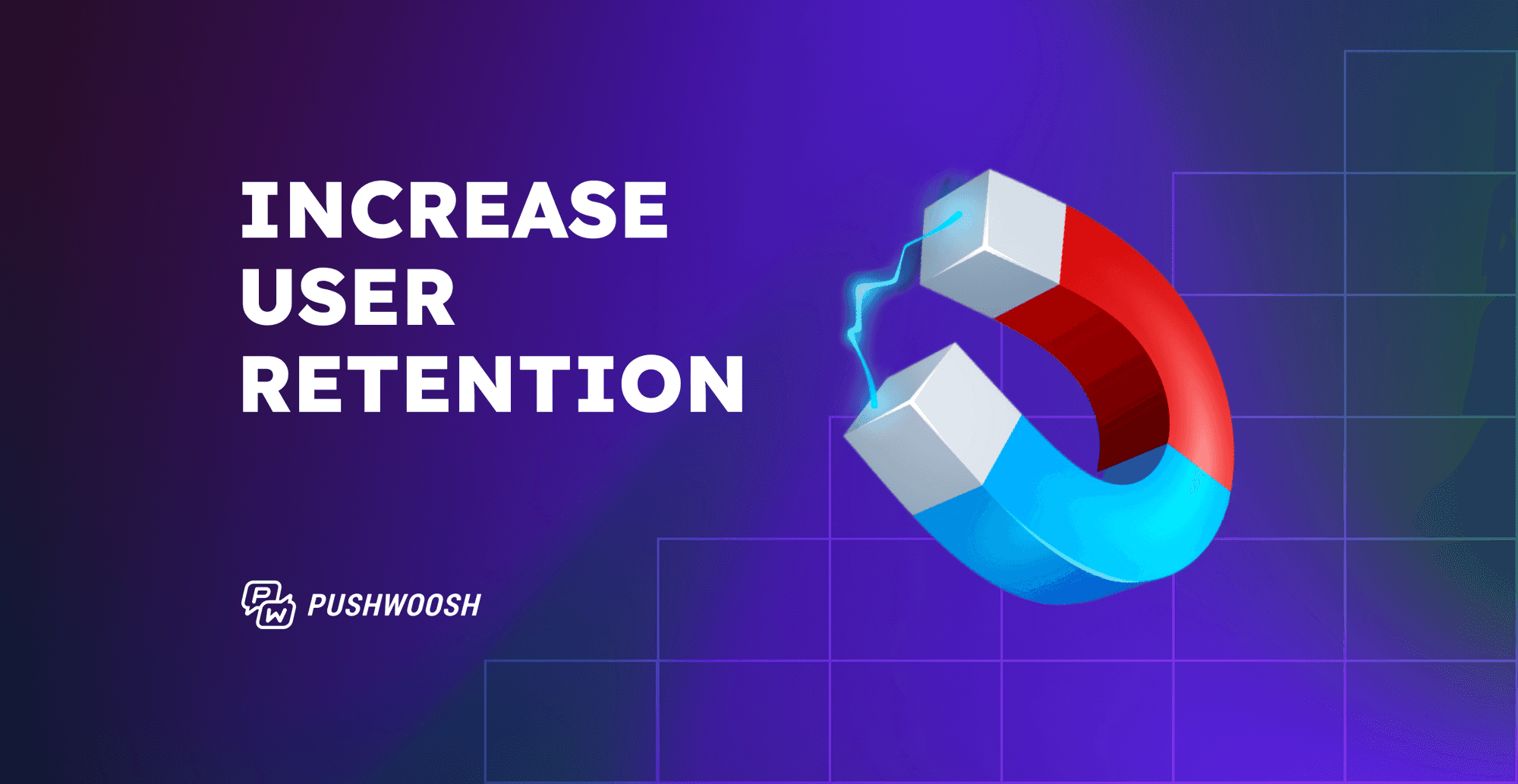How to increase customer loyalty with a mobile app
With acquisition costs steadily rising, retaining users to maximize their lifetime value (LTV) and drive sustainable growth is essential. A well-designed mobile app can be pivotal in achieving this, offering unique tools and channels to engage users and foster loyalty.
Why is customer loyalty important for mobile apps?
Loyal customers are more likely to make repeat purchases, engage more frequently, and act as brand advocates. Studies show that retention-focused strategies significantly reduce costs, as it’s much cheaper to keep an existing user engaged than to acquire a new one.
Loyal users, in turn, provide a better return on ad spend (ROAS) and can significantly boost an app’s profitability over time: the longer a user sticks with your app, the higher the LTV of this user will be.
How to increase customer loyalty with a mobile app
Mobile apps should strategically integrate loyalty-building features beyond traditional engagement tactics to enhance customer loyalty. Below are some key approaches to increasing customer loyalty effectively.
Mobile app loyalty programs
One of the most effective ways to boost loyalty is by implementing a mobile-specific loyalty program. This can give users incentives, rewards, and exclusive content that keeps them returning. Let’s break down the main benefits of a loyalty program within a mobile app.
Benefits of using a mobile app loyalty program
1️⃣ Helps retain more customers
Loyalty programs create a sense of belonging and reward, encouraging users to keep engaging with the app. Offering points, discounts or exclusive content can incentivize users to return to the app regularly, reducing churn.
2️⃣ Improves customer lifetime value (CLTV)
Loyal users are more likely to make repeat purchases, which boosts their lifetime value. When users feel valued, they engage more deeply with the brand, increasing their potential value over time.
3️⃣ Increases your average order value (AOV)
Loyalty programs can be tailored to encourage higher spending per transaction, such as exclusive offers or limited-time rewards for users who reach specific spending milestones.
4️⃣ Enhances customer engagement
Loyalty programs introduce interactive and personalized elements that increase user engagement, making the app a go-to destination for more than just transactions.
5️⃣ Cultivates brand loyalty
A loyalty program strengthens brand affinity by providing consistent value and showing that the brand values its users. Over time, this builds emotional connections that convert casual users into long-term advocates.
6️⃣ Allows personalization of customer experiences
Using data from user activity, you can tailor rewards, offers, and content to fit each user’s preferences, which can significantly enhance engagement and loyalty.
7️⃣ Gives you access to first-party data
Loyalty programs provide insights into user behavior and preferences, which are invaluable for further refining app features, marketing strategies, and personalization efforts.
Increasing customer loyalty through a mobile app requires a balanced approach that combines engaging features, convenient functionality, and data-driven personalization. By integrating loyalty programs, leveraging targeted push notifications and well-orchestrated mobile CRM strategies, and creating seamless in-app experiences, you can turn casual users into loyal advocates for your brand.
Top 5 mobile app features to increase customer loyalty
Equipping your app with the right features and CRM strategies can boost loyalty by delivering an engaging, seamless, and rewarding experience. Here are five features that can make a difference.
1. Highly-targeted push notifications & in-app messaging
Push notifications allow you to reach users in real time, increasing the chances of engagement.
However, to truly enhance loyalty, notifications should be targeted and relevant, leveraging user data to send personalized offers, reminders, or updates based on each user’s behavior and preferences.
In-app messages can be another powerful tool to boost retention and conversions, especially when combined with push notifications.
Best practices for push notifications:
• Tailor content and timing according to user preferences and in-app behavior.
• Segment your audience and personalize the message to be more relevant and increase the chances of interactions.
• Avoid over-sending; too many notifications can lead to user fatigue, opt-out, or, in the worst case, uninstalls.
2. Unique live selling experiences and in-app exclusive deals
In-app live selling and exclusive deals reserved for mobile users offer a compelling way to engage users and drive loyalty through interactive experiences. By hosting exclusive live events or flash sales, users feel they are part of something unique, creating excitement and a sense of exclusivity.
Tips for effective live selling:
• Promote upcoming live events through push notifications or emails.
• Offer limited-time rewards during live sessions to increase engagement.
• Use analytics to measure what types of events resonate most with your audience.
3. Personalized rewards and gamification
Rewarding users based on their activity, purchases, or engagement can create a fun, game-like experience that incentivizes continued app usage. Features like point systems, progress badges, and milestone rewards keep users motivated, offering them tangible rewards for engaging with your app.
Loyalty programs can be enhanced with personalization. When rewards are aligned with user behavior and preferences, every interaction will feel relevant and satisfying.
Similarly, adding social layers, like leaderboards, team challenges, or referral bonuses, can create shared achievements and foster a community feeling that can drive further engagement.
Gamification ideas:
• Create levels or tiers that unlock special rewards as users engage.
• Offer points or badges for specific actions, such as completing a purchase or referring friends.
• Introduce seasonal or themed events that encourage frequent engagement.
4. Easy and secure payment options
Loyalty isn’t just about fun features; convenience also plays a huge role. Providing smooth, secure payment options reduces friction and enhances trust, making users more likely to return for future transactions. Consider incorporating multiple payment methods, one-click checkouts, and security features to create a seamless experience.
Key payment considerations:
• Ensure that users have a variety of payment options.
• Implement advanced security measures to protect user data.
• Offer saved payment methods to make repeat purchases quickly and easily.
5. Real-time data analytics and reporting
Real-time analytics allow you to understand user behavior, preferences, and engagement patterns, which is critical for optimizing your loyalty features. By tracking how users interact with your app, you can make data-informed decisions to refine your loyalty strategy and meet evolving user needs.
Benefits of real-time data:
• Helps tailor loyalty programs and promotions to user preferences.
• Provides insights for personalizing app features and messaging.
• Enables quick adjustments to your strategy, ensuring your app remains relevant and engaging.
In 2025, the importance of putting the customer at the center of your app strategy cannot be overstated. Growth without retention is no longer sustainable. In an era where user acquisition costs are higher than ever, it’s crucial to focus not only on getting users to install your app but also on ensuring they remain engaged and find continuous value in using it. Personalization is the cornerstone of this engagement. Apps prioritizing tailored experiences—by delivering content, offers, and interactions that align with individual user preferences and behaviors—are far more likely to build meaningful connections and foster long-term loyalty.
Optimizing your loyalty program: Key considerations and best practices
To truly drive long-term engagement, it’s essential to continually optimize and refine your approach based on user feedback and behavioral insights. Below are some best practices to help ensure your loyalty program remains effective and valuable for users.
User-centric design
When designing your loyalty program, keeping the user experience at the forefront is crucial. Analyze user behavior to understand what resonates with them and structure the program to be intuitive and rewarding.
• Make it accessible: Ensure users can easily understand and navigate the loyalty program. Complicated rules or a lack of clear benefits can deter users from participating.
• Align with user preferences: Use data to shape the rewards and structure of the program. For instance, if your app serves younger audiences who value instant rewards, consider offering points or badges for frequent, small actions.
• Build a seamless experience: Loyalty features should integrate naturally into the app’s user journey. Every interaction with the loyalty program should feel like a natural extension of the app, not a separate or forced experience.
Moreover, the apps that will thrive in 2025 will be those that leverage advanced technologies like AI and predictive analytics to deepen personalization at scale. Personalization transforms a functional app into an indispensable part of a user’s daily life, whether through hyper-relevant product recommendations, real-time in-app suggestions, or contextually aware notifications. These tailored interactions enhance the user experience, build trust, and make users feel valued.
Regularly refresh rewards
Over time, even the most loyal users may lose interest if the rewards and incentives remain static. Keeping the program fresh and exciting can reignite interest and motivate users to stay engaged.
• Introduce seasonal or limited-time rewards: Offering exclusive rewards around holidays, sales, or special events can drive engagement and make users feel like they’re receiving unique value.
• Create tiered loyalty levels: Implementing tiers or levels in the program, where users unlock better rewards as they reach milestones, can drive consistent engagement and give users something to strive for.
• Solicit user feedback: Regularly collect feedback from users about which rewards they find most valuable. This allows you to refine the program to meet their evolving expectations.
Measure and refine
Optimization is a continuous process. Regularly tracking and analyzing key metrics will help you assess the impact of your loyalty program and make data-driven adjustments to improve its performance.
• Retention rate: Monitor how the loyalty program affects user retention. Are users staying active longer as they engage with the program?
• Customer lifetime value (CLTV): By measuring CLTV, you can gauge the long-term financial impact of loyal users. Increased CLTV indicates that your program encourages users to spend more and engage more frequently.
• Engagement rate: Track the participation levels in your loyalty program. High engagement suggests that users find value in the program, while low engagement might signal the need for adjustments.
• Iterate based on insights: Use these metrics to inform decisions about updating the program. If you see a drop in engagement, it may be time to introduce new rewards or simplify the structure. Continuous iteration ensures your loyalty program aligns with user needs and market trends.
Final thoughts
Increasing customer loyalty through a mobile app requires a balanced approach that combines engaging features, convenient functionality, and data-driven personalization.
By integrating loyalty programs, leveraging targeted push notifications and well-orchestrated mobile CRM strategies, and creating seamless in-app experiences, you can turn casual users into loyal advocates for your brand.
Customer loyalty is a journey, not a destination. By continuously analyzing and optimizing your app’s loyalty features, doubling down on personalization, and creating meaningful, memorable interactions, you can build lasting relationships that retain users and turn them into passionate advocates for your brand.






